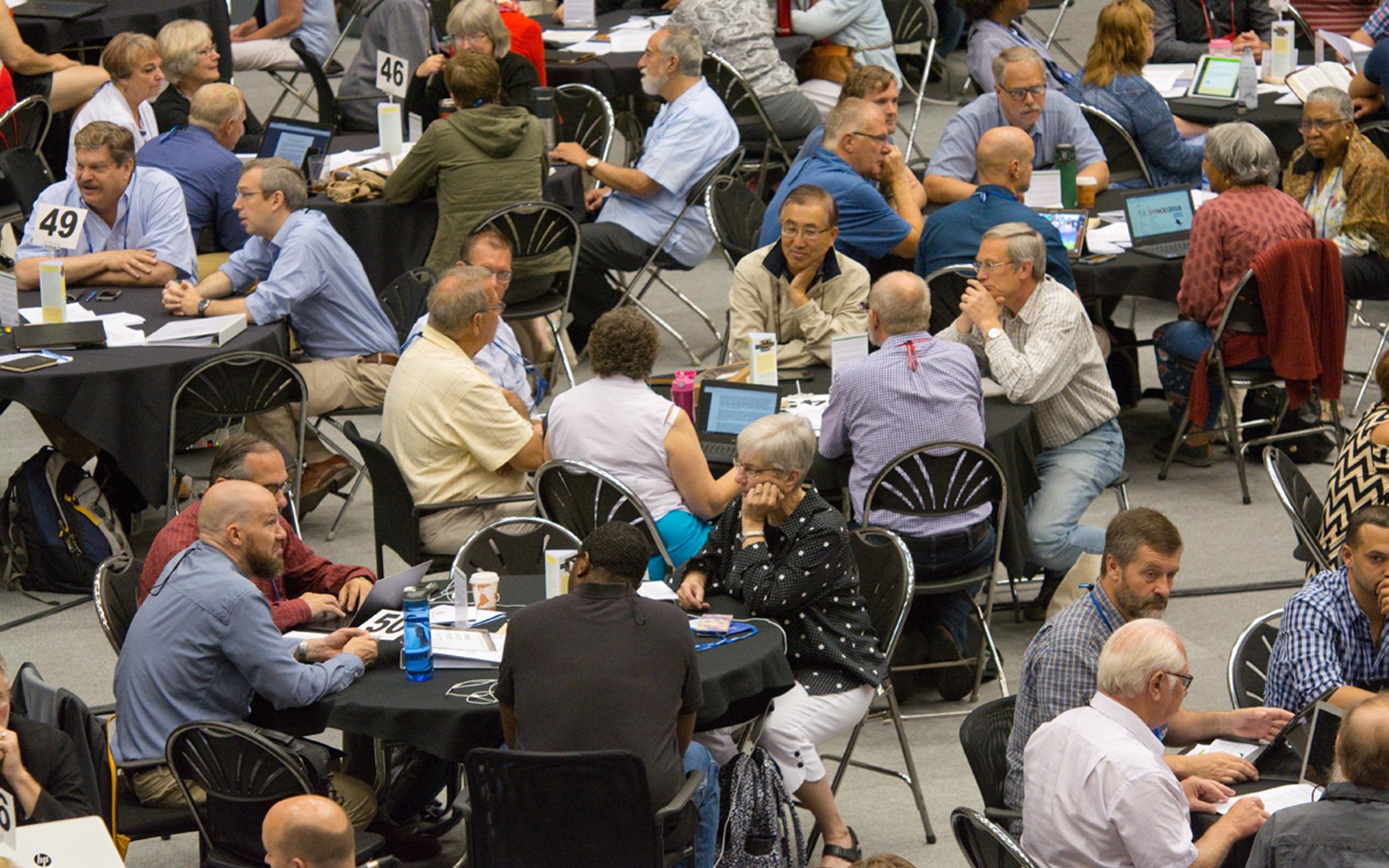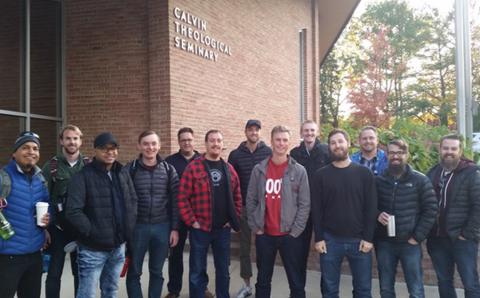For three hours on Saturday morning, for the first time ever, delegates from the Reformed Church of America (RCA) and the Christian Reformed Church (CRC) gathered together in small groups to discuss and provide direction on four proposals to increase cooperation. These proposals were intended not for action by the synods (the annual national denominational meetings) but to give direction for the future.
The RCA and the CRC, which come from common roots, separated initially in 1857. For many years there was little direct communication between the denominations, but in recent years they have moved to become more collaborative. In 2014, both synods adopted what has become known as the “Pella Accord,” which is to “act together in all matters except those in which deep differences of conviction compel [them] to act separately.”
The proposals discussed by the Saturday groups presented new ways for the two denominations to cooperate. They varied from probable, already-in-the-works ideas, to a less likely, what-if, idea for the future. Proposals already being worked on or likely to be worked on soon include ways of further consolidating denominational services, especially in the area of congregational renewal, and a joint effort to promote and shape interfaith engagement. Less likely at present is a proposal to join and radically reconfigure the denominations.
The groups followed carefully scripted processes, moving to single report from each group. The reports were consolidated over the weekend. On Monday morning, the two synods met together to hear summaries of the group discussions for each of the four proposals.
Five groups met to discuss “New Creation,” the most radical proposal to join and reconfigure the denominations. In the proposal, the RCA and CRC would unite into one new denomination. This new denomination would be divided into three synods aligned by affinity, not geography. Exactly how this would work was not specified, nor was “affinity” defined. Congregations would choose which synod to belong to.
The groups discussing this proposal were dubious about the idea of affinity synods. They were concerned that separating churches by affinity would further divide them from each other. Instead, they found hope and joy in increasing collaboration between the CRC and the RCA.
In contrast to the blue-sky thinking in the “New Creation” proposal, the groups discussing increased collaboration between the denominations were enthusiastic about the possibilities presented to them. One proposal envisioned future collaboration between the denominations in a “jointly developed and owned central service center” that would consolidate denominational services.
The remaining two proposals were specific examples of possible collaboration. One was an effort to bring together church renewal resources and programs so that congregations seeking assistance would be able to easily access what is currently available and what may become available. The other is a proposal to cooperate across denominations in learning how to engage other religions.
On Monday, after a consolidated report on each proposal was read, the delegates spent a few minutes discussing what they had heard. What happens next to the proposals has not been specified.
Synod 2018 is meeting at Calvin College in Grand Rapids, Mich., from June 7-14. For continuous coverage while synod is in session, download the Banner app on your mobile device or follow The Banner Magazine on Facebook or @crcbanner on Twitter. You can find more tweeting by following hashtag #crcsynod. News stories will be posted at thebanner.org several times daily. For CRC Communications releases and the webcast, please visit crcna.org.
About the Author
Clayton Libolt was the long time pastor of River Terrace Church in East Lansing, Mich. Since his retirement, he has served in a variety of interim positions. He is presently serving as the interim senior pastor of Sonlight Community CRC in Lynden, Wash.









